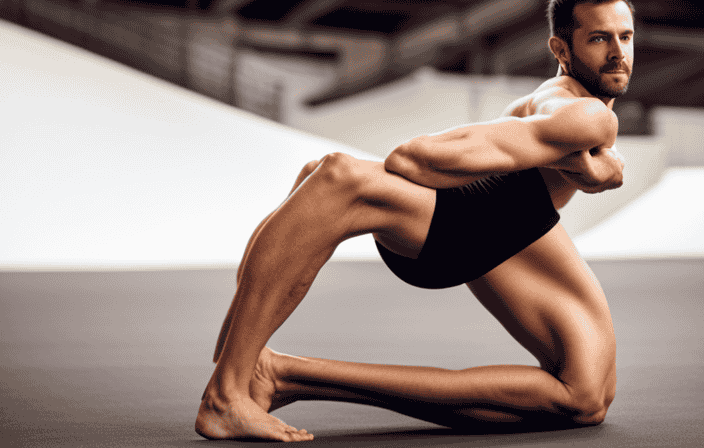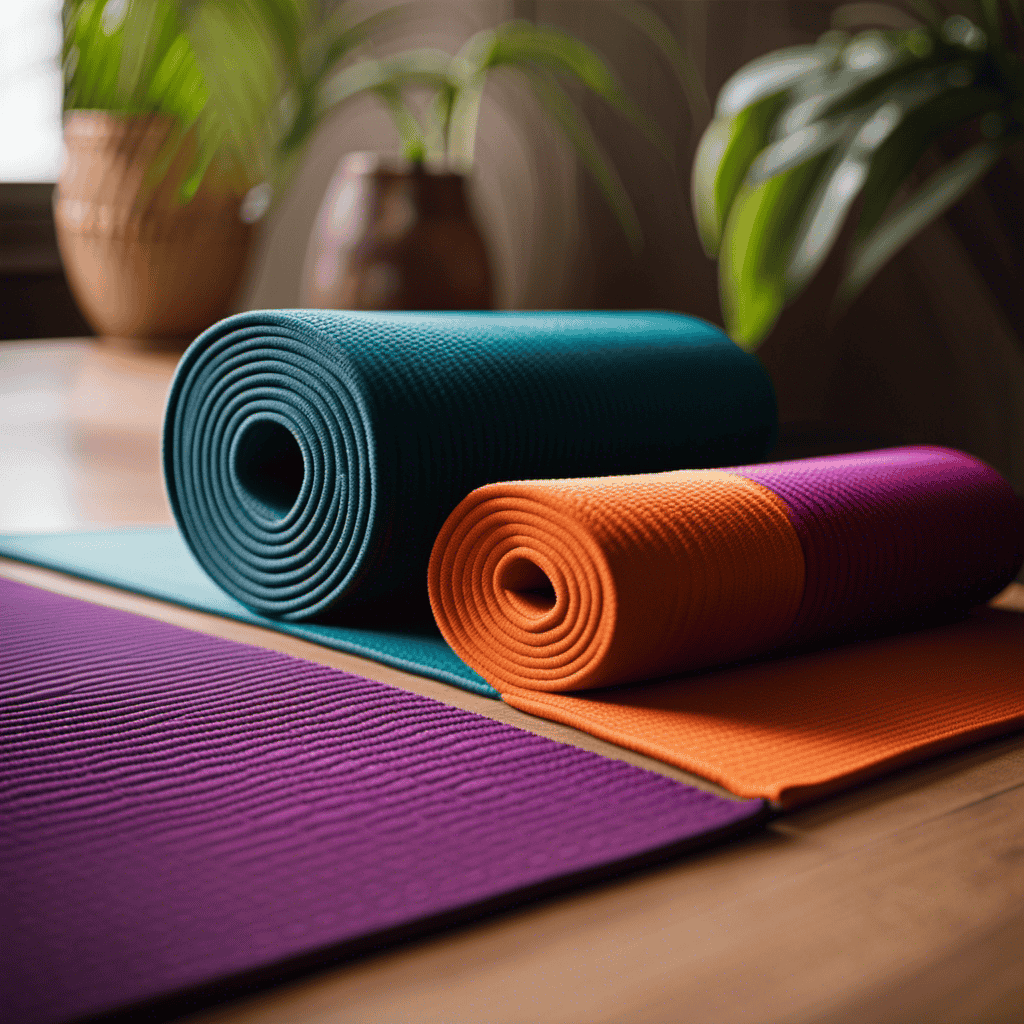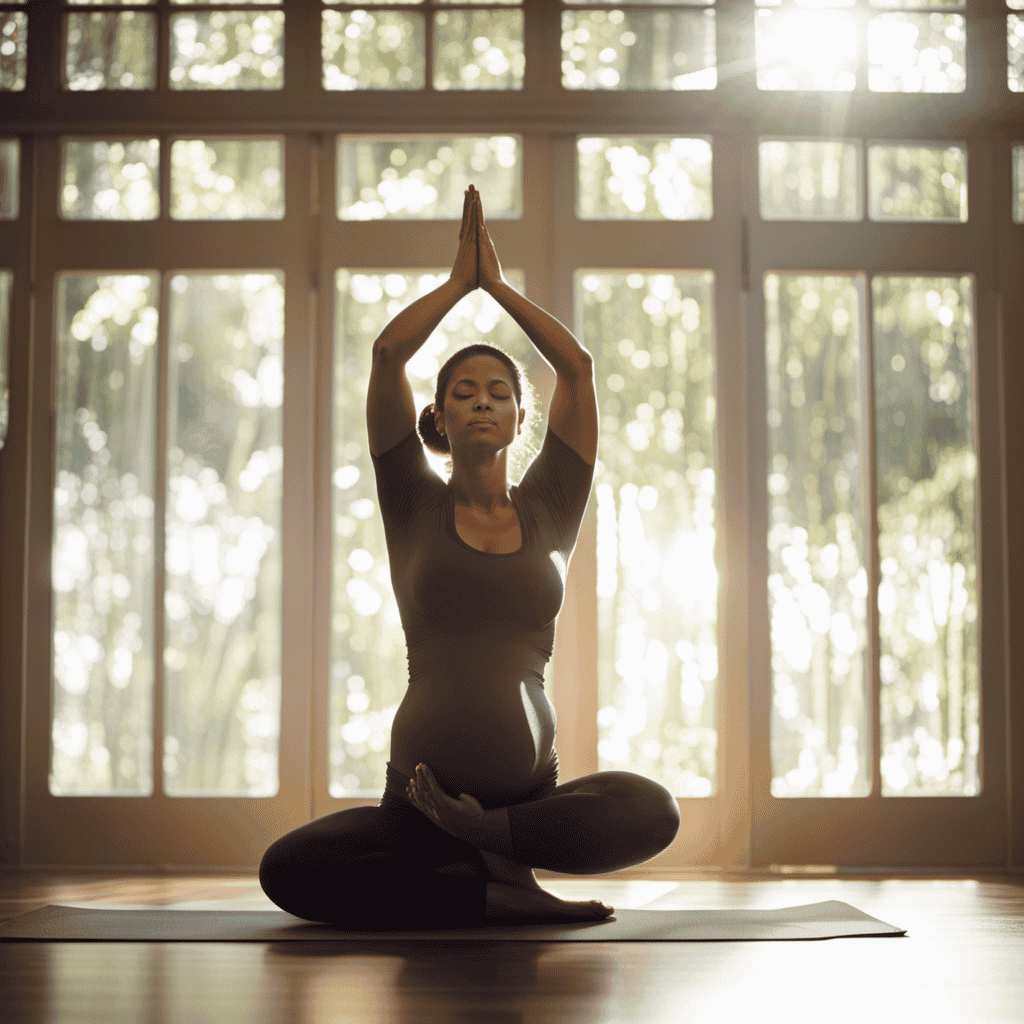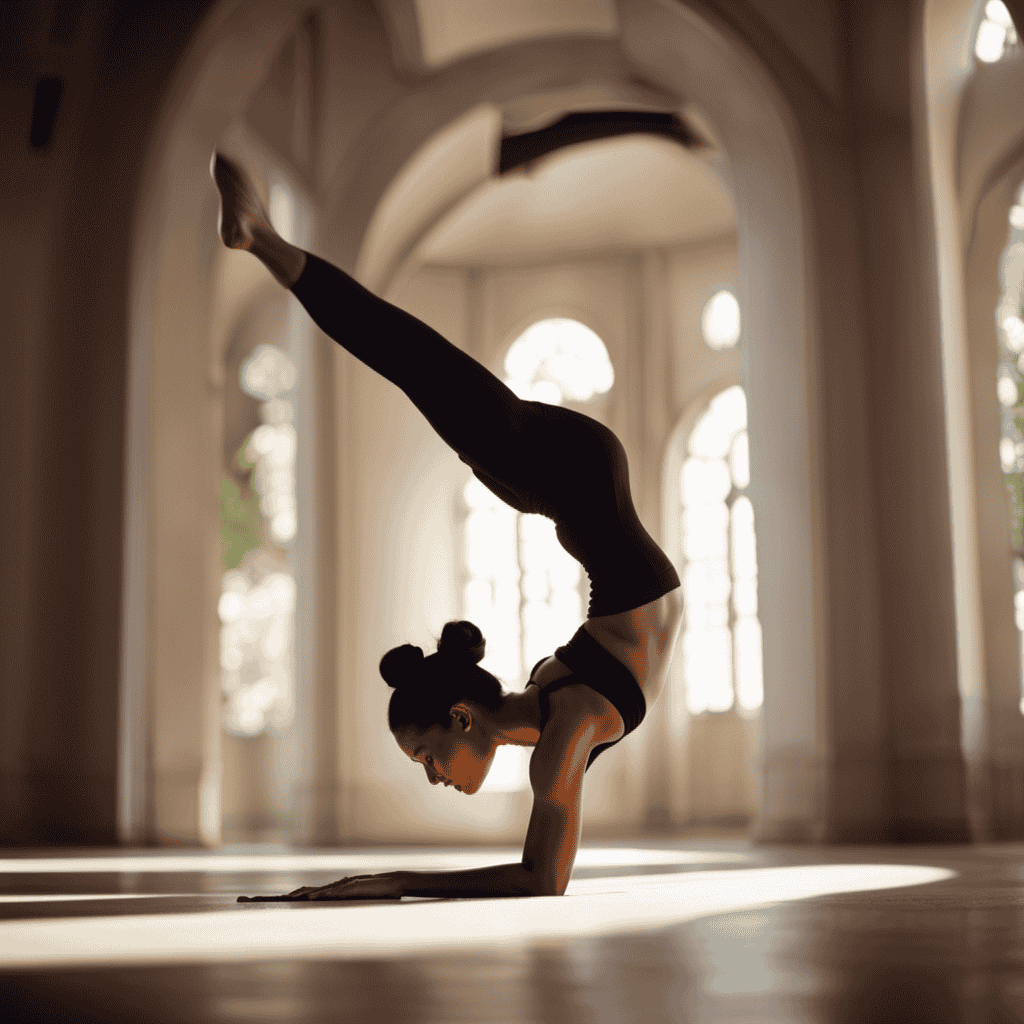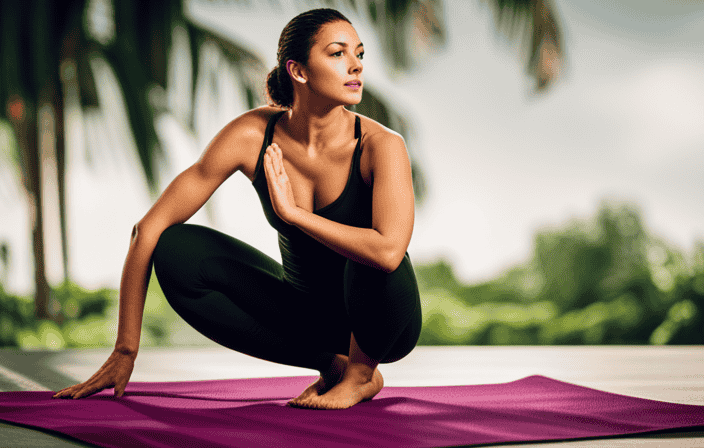Plow Pose, also referred to as Halasana, provides numerous advantages, however, it is essential to practice this pose carefully.
While it enhances flexibility and strength in the spine, it’s not suitable for individuals with neck, back, or shoulder injuries, high blood pressure, or during menstruation.
Beginners may find it challenging due to its requirement of flexibility in the spine, shoulders, and hamstrings.
With consistent practice, modifications, and guidance, Plow Pose can become more accessible, leading to improved well-being and harmony between the mind and body.
Key Takeaways
- Plow pose is not suitable for individuals with neck, back, or shoulder injuries, high blood pressure, or during menstruation.
- Plow pose requires flexibility in the spine, shoulders, and hamstrings, and can be challenging for beginners.
- Yoga offers a variety of poses, each with unique benefits, and it’s important to explore different poses for a holistic and balanced practice.
- Plow pose improves flexibility, strengthens the spine, promotes relaxation, and enhances overall well-being and harmony between mind and body.
Benefits and Advantages
Plow pose offers a wide range of benefits and advantages, including improved flexibility, a stronger spine, relaxation, and overall well-being.
One of the key benefits of this pose is improved flexibility. By stretching the spine, shoulders, and hamstrings, plow pose helps to increase the range of motion in these areas. This can be particularly beneficial for individuals who struggle with tightness or stiffness in these areas.
Additionally, plow pose promotes relaxation by calming the mind and releasing tension in the body. By practicing deep breathing and focusing on the present moment, plow pose can be used as a relaxation technique to reduce stress and anxiety.
Incorporating plow pose into your yoga practice can lead to a more flexible body, a stronger spine, and a sense of overall well-being.
Suitability and Restrictions
Not recommended for individuals with neck, back, or shoulder injuries, Plow Pose and Halasana may also be unsuitable for those with high blood pressure.
When to avoid Plow Pose and Halasana:
-
Individuals with neck, back, or shoulder injuries should avoid this pose as it puts pressure on these areas.
-
Those with high blood pressure should refrain from practicing Plow Pose due to the potential risks it poses to blood pressure regulation.
-
Women should avoid practicing Plow Pose during menstruation as it can increase discomfort and potentially worsen symptoms.
-
It is important to exercise caution and consult with a qualified instructor or healthcare professional before attempting Plow Pose, especially for individuals with certain health conditions.
By being aware of these suitability and restriction factors, one can make informed decisions about when to avoid Plow Pose and ensure their practice is safe and beneficial.
Difficulty and Modifications
Challenging for me as a beginner, I found that Plow Pose requires flexibility in my spine, shoulders, and hamstrings. To make this pose more accessible, modifications can be made for beginners. Here are some modifications to increase flexibility:
| Modification | How it Helps |
|---|---|
| Using props such as blankets or blocks under the shoulders for support | Reduces strain on the neck and shoulders |
| Bending the knees slightly | Relieves tension in the hamstrings |
| Keeping the hands on the lower back for added support | Helps maintain balance and stability |
By incorporating these modifications, beginners can gradually build the strength and flexibility necessary for Plow Pose. It is important to listen to the body and not push beyond one’s limits. Consistent practice and guidance from a qualified instructor can also contribute to progress in this pose. Remember to approach Plow Pose with mindfulness and caution, especially if you have any health conditions or limitations. With proper care, Plow Pose can be a valuable addition to your yoga practice, helping you increase flexibility and strengthen your spine.
Physical and Mental Benefits
Engaging in regular yoga practice has helped me improve my flexibility, strengthen my spine, and enhance my overall well-being.
Plow Pose, in particular, has played a significant role in achieving these benefits. This challenging pose requires flexibility in the spine, shoulders, and hamstrings, and with consistent practice, I have noticed a significant improvement in my flexibility.
The deep stretch that Plow Pose provides allows me to release tension and stress, promoting relaxation in both my body and mind. Additionally, this pose strengthens the spine, which is crucial for maintaining a healthy posture and preventing back pain.
Overall, incorporating Plow Pose into my yoga practice has not only improved my physical well-being but also helped me find a sense of calm and relaxation in my daily life.
Mindful Approach and Guidance
Incorporating a mindful approach and seeking guidance from a qualified instructor has been essential in my yoga practice. It has allowed me to deepen my mind-body connection and prevent injuries. By being aware of my body’s limitations and listening to its signals, I can modify the Plow Pose to ensure a safe and beneficial practice.
A mindful approach involves being present in the moment and paying attention to the sensations in my body. It helps me avoid pushing myself too far and risking injury. Seeking guidance from a qualified instructor has been invaluable in understanding the proper alignment and technique for the pose. Their expertise ensures that I am practicing the Plow Pose correctly, minimizing the risk of strain or damage.
To illustrate the importance of a mindful approach and guidance, I have created a table below:
| Mindful Approach | Guidance from a Qualified Instructor |
|---|---|
| Promotes awareness of body’s limitations | Provides expertise in alignment and technique |
| Prevents pushing oneself too far | Minimizes the risk of strain or injury |
| Enhances mind-body connection | Ensures a safe and beneficial practice |
Incorporating a mindful approach and seeking guidance from a qualified instructor not only enhances the mind-body connection but also prevents injuries. It allows for a safer and more fulfilling yoga practice, ensuring that the benefits of the Plow Pose can be fully experienced without compromising overall well-being.
Regular Practice and Improvement
Practicing the Plow Pose regularly has allowed me to gradually improve my flexibility and strengthen my spine. With consistency and dedication, I have seen noticeable progress in my ability to fold forward and touch my toes to the ground behind my head.
This increased flexibility in my spine has not only helped me in my yoga practice, but also in my daily movements and overall posture. Additionally, the Plow Pose has helped me develop a greater sense of body awareness and alignment. I have learned to engage my core and activate my muscles properly, which has contributed to the growth and stability of my spine.
Through regular practice, I have experienced the benefits of this pose firsthand and have become more motivated to continue exploring and challenging myself in my yoga journey.
Safety Precautions
While practicing the Plow Pose, it is important to prioritize safety and take necessary precautions. To prevent common injuries and ensure a safe practice, here are three key precautions to take:
-
Warm up properly: Before attempting the Plow Pose, it is crucial to warm up your body thoroughly. This can include gentle stretches for the neck, shoulders, and hamstrings, as well as some light cardiovascular activity to increase blood flow.
-
Use props if needed: If you are a beginner or have limited flexibility, using props such as blankets or blocks can provide support and make the pose more accessible. Placing a folded blanket under your shoulders can help alleviate strain on the neck and upper back.
-
Listen to your body: Pay close attention to any discomfort or pain during the pose. If you experience any sharp or intense sensations, it is important to come out of the pose immediately and seek guidance from a qualified instructor.
By following these precautions, you can ensure a safe and enjoyable practice of the Plow Pose, allowing you to reap its many benefits while minimizing the risk of injury.
Overall Well-being and Harmony
Maintaining overall well-being and harmony between mind and body is crucial in any yoga practice. The mind-body connection is at the core of yoga, and Plow Pose can contribute to this holistic practice.
By engaging in Plow Pose regularly and mindfully, you can enhance your overall well-being. This pose promotes relaxation, improves flexibility, and strengthens the spine. It allows for a deeper understanding of the body’s capabilities and limitations, fostering a sense of harmony.
However, it’s important to approach Plow Pose with caution, especially for individuals with specific health conditions. Modifications can be made to make the pose safer and more accessible. Seeking guidance from a qualified instructor is essential to ensure a mindful and safe practice.
With proper care, Plow Pose can be a valuable addition to your yoga routine, promoting overall well-being and a balanced mind-body connection.
Frequently Asked Questions
What are some common mistakes to avoid when practicing Plow Pose?
Common mistakes to avoid when practicing Plow Pose include forcing the body into the pose without proper warm-up or flexibility, straining the neck or shoulders, and not modifying the pose for individual limitations or injuries.
Can Plow Pose help with relieving stress and anxiety?
Plow pose can be a helpful tool for reducing stress and anxiety. It promotes relaxation, enhances overall well-being, and creates harmony between the mind and body. Regular practice can lead to these benefits.
Are there any specific warm-up exercises recommended before attempting Plow Pose?
Before attempting Plow Pose, it is important to warm up your body with exercises like gentle spinal stretches and shoulder rolls. Precautions include avoiding the pose if you have neck, back, or shoulder injuries.
Can Plow Pose be beneficial for individuals with lower back pain?
Plow pose can be beneficial for individuals with lower back pain. It can help strengthen and stretch the spine, promoting better spinal health. Modifications, such as using props or bending the knees, can make the pose safer and more accessible.
Are there any specific breathing techniques that can be incorporated during the practice of Plow Pose?
During the practice of Plow Pose, incorporating breathing techniques like deep inhales and exhales can promote relaxation and enhance the benefits. Modifications such as using props or adjusting the position can make the pose more accessible and enjoyable.
Conclusion
In conclusion, Plow Pose, or Halasana, offers numerous benefits for those who can safely practice it. However, it is crucial to approach this pose with caution and make necessary modifications, especially for individuals with certain health conditions.
With consistent practice and guidance from a qualified instructor, Plow Pose can lead to improved flexibility and strength in the spine, while promoting relaxation and overall well-being. It is important to remember that proper care and safety precautions should always be taken.
By investigating the truth of theories and approaching this pose mindfully, one can enhance their yoga practice and achieve harmony between the mind and body.

